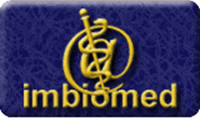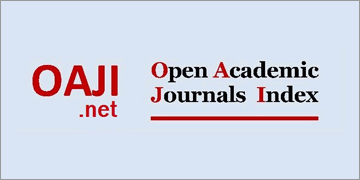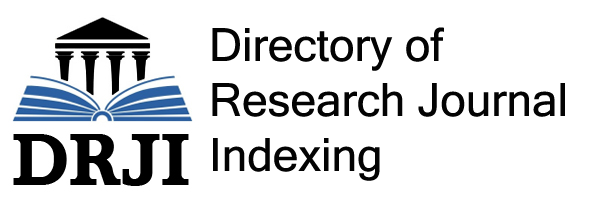EFECTO DE Tropaeolum tuberosum FRENTE A LA HIPERPLASIA PROSTÁTICA BENIGNA INDUCIDA EN RATAS HOLTZMAN
Citas
1. MattsonPorth C. Fisiopatología: Salud – Enfermedad: un enfoque conceptual. 7ma ed. España, Madrid: Panamericana; 2009.
2. Kellogg J. Benign Prostatic Hyperplasia and Male Lower Urinary Tract Symptoms: Epidemiology and Risk Factors. Current Bladder Dysfunction Report 2010; 5(4):212–218.
3. Lepor H. Pathophysiology, epidemiology, and natural history of benign prostatic hyperplasia. Rev Urol 2004; 6(Suppl 9): 3- 10.
4. Tang J, Yang J. Etiopathogenesis of benign prostatic hyperplasia. Indian J Urol 2009; 25(3): 312–317.
5. Clement K, Fouad K. Estrogen and androgen signaling in the pathogenesis of BPH. Rev Urol 2011; 8: 29–41
6. PotenzianiBiguelli, C. Enfermedades de la próstata. Caracas, Venezuela: Ateproca 2001.
7. Thibaut J, Santander J, Mieres M. Estudio comparativo de la próstata en perros mediante ecografía transrectal y transabdominal. ArchMedVet2009; 41(1): 61-66.
8. Perú, Ministerio de salud, Dirección General de Epidemiología. Análisis de la situación de salud del Perú; 2010
9. Peeling W, Griffiths G. Review article: imaging of the prostate by ultrasound. J Urol 1984; 132: 217-224.
10. Goodman&Gilman. Las bases farmacológicas de la terapéutica. 11 ed. México, DF: McGraw-Hill Interamericana; 2007. pp. 268- 272.
11. Bellma A, Tillán J, Menéndez R, López O, Carrillo C, González M. Evaluación del extracto lipofílico de Cucurbita pepo L. sobre la hiperplasia prostática inducida por andrógenos. Rev Cubana PlantMed 2006; 11(2).
12. Wilt T, Mac Donald R, Ishani A, Rutks I, Stark G. Cernilton para la hiperplasia benigna de próstata. Cochrane [Database of Systematic Reviews]. 2008- [citado 2010 agosto 18]. ID: CD001042; [about 2 p
13. Wilt T, Ishani A, Mac Donald R, RutksI,Stark G. Pygeumafricanum para la hiperplasia benigna de la próstata. Cochrane [Database of Systematic Reviews]. 2008- [citado 2010 agosto 15]. ID: CD001044; [about 21 p.].
14. Gonzales G, Miranda S, Nieto J, Fernández G, Yucra S, Rubio J, et al. Red maca (Lepidiummeyenii) reduced prostate size in rats. ReprodBiolEndocrino 2005; 3 (5): 1- 16.
15. Gasco M, Villegas L, Yucra S, Rubio J,Gonzales G. Dose-response effect of Red Maca (Lepidiummeyenii) on benign prostatic hyperplasia induced by testosterone enanthate. Phytomedicine 2007; 14(7- 8): 460- 464.
16. Betalleluz I. Estudios de las antocianinas y evaluación de estabilidad de extractos de Mashua (Tropaeolumtuberosum) [tesis doctoral]. Lima: Universidad Nacional Agraria La Molina; 2006.
17. Shapiro T, Fahey J, Wade K, Stephenson K, Talalay P. Human metabolism and excretion of cancer chemoprotectiveglucosinolates and isothiocyanates of cruciferous vegetables. Cancer Epidemiol Biomarkers Prev 1998; 7: 1091-1100.
18. Chiao J, Wu H, Ramaswamy G, Conaway C, Chung F, Wang L, et al. Ingestion of an isothiocyanates metabolite from cruciferous vegetables inhibits growth of human prostate cancer cell xenografts by apoptosis and cell cycle arrest. Carcinogenesis 2004; 25:1403-1408.
19. Smith S, Sepkovic D, Leon H, Auborn K. 3,3’-Diindolylmethane and Genistein Decrease the Adverse Effects of Estrogen in LNCaPand PC-3 Prostate Cancer Cells. J Nutr 2008; 138: 2379- 2385.
20. Ortega O, Kliebenstein D, Arbizu C, Ortega R, Quiros C. Glucosinolate survey of cultivated and feral mashua (TropaeolumtuberosumRuíz&Pavón) in the Cuzco region of Peru. Economic Botany 2006; 60(3): 254 – 264.
21. Noratto G, Cisneros-Zevallos L, Mo H. Tropaeolumtuberosum (mashua) extractssuppress tumor cellproliferation. FASEB J 2004; 18(5): 886.
22. García R, Sanz E, Arias F, Rodríguez R y Mayayo T. Diagnóstico y seguimiento de la Hipertrofia Prostática Benigna mediante ecografía..Arch. Esp. Urol., 59, 4 (353-360), 2006
23. Ángel R. Concepción A, De la Peña R, García J. Acercamiento al accionar ético-moral del científico que trabaja con animales de experimentación. Acta Bioethica 2007; 13(1): 9-15.
24. Crisóstomo V, Maynar M, Sun F, Usón J, Sánchez F. Estudio ultrasonográfico e histológico de la evolución de un modelo canino de hiperplasia benigna de próstata inducida por hormonas. Actas UrolEsp 2009; 33(8): 895-901.
25. Tavares V, Milito M, Marchiori E. O papel atual da ultra-sonografiatransretal da próstata nadetecçãoprecoce do cáncer prostático. RadiolBras 2006; 39(3):185–192.
26. VeereshBabu SV, Veeresh B, Patill AA, Warke YB: Lauric acid and myristic acid prevent testosterone induced prostatic hyperplasia in rats. Eur J Pharmacol 2010, 625:262-265.
27. Untergasser G, Madersbacher S, Berger P. Benign prostatic hyperplasia: Age-related tissue-remodeling. ExpGerontol 2005; 40(3): 121- 128.
28. Cabello R, Jara J, Monzo J, López I, Subirá D, Lledó E, et al. Correlación ecográfico-anatómica de la medición del volumen prostático total y de la zona transicional mediante ecografíatransrectal. Actas UrolEsp 2006; 30 (2): 175-180.
29. Huang F, De Vries S, Raaijmakers R, Postma R, Bosch, R. Prostate volume ultrasonography: The influence of transabdominal versus transrectal approach, device type and operator. EurUrol 2004; 46(3): 352-356.
30. Shin IS, Lee MY, Ha HK, Seo CS, Shin HK.Inhibitoryeffect of Yukmijihwang-tang, a traditional herbal formula againsttestosterone-inducedbenignprostatichyperplasia in rats. BMC ComplementAlternMed. 2012 Apr 20;12:48
Revista Científica
CIMEL
Ciencia e Investigación Médica Estudiantil Latinoamericana
Órgano Oficial de Difusión Científica de la Federación Latinoamericana de Sociedades Científicas de Estudiantes de Medicina FELSOCEM
ISSN versión electrónica: 1992 - 4240
ISSN versión impresa: 1680 - 8398
DECLARACIÓN:
- En caso que el artículo fuese aprobado para su publicación en la Revista Ciencia e Investigación Médica Estudiantil Latinoamericana (CIMEL), cedo mis derechos patrimoniales y autorizo a dicha Revista a la publicación y divulgación del documento en las condiciones, procedimientos y medios que disponga CIMEL.
- Certifico que he contribuido directamente al contenido intelectual de este manuscrito, a la génesis y análisis de sus datos, por lo cual estoy en condiciones de hacerme públicamente responsable de él y acepto que mi nombre figure en la lista de autores.
- Garantizo que el artículo es un documento original y no ha sido publicado, total ni parcialmente, en otra revista científica, salvo en forma de resumen o tesis (en cuyo caso adjunto copia del resumen o carátula de la tesis).
- En caso de que se haya sido publicado previamente, adjunto la autorización original de la Revista donde se realizó la publicación primaria, para su publicación duplicada en la Revista CIMEL.
- No recibiré regalías ni ninguna otra compensación monetaria de parte de la Revista CIMEL por la publicación del artículo.
- No he incurrido en fraude científico, plagio o vicios de autoría; en caso contrario eximo de toda responsabilidad a laRevista CIMEL; y me declaro como el único responsable.
- Me comprometo a no presentar este artículo a otra revista para su publicación, hasta recibir la decisión editorial de la Revista CIMEL sobre su publicación.
- Adjunta a mi firma, incluyo cuál fue mi participación en la elaboración del artículo que presento para publicar a la Revista CIMEL (Según tabla de códigos de participación).
|
|
Códigos de Participación: (Anote estos códigos en la parte correspondiente a su nombre, de acuerdo a su participación dentro del trabajo enviado). |






.png)





 Todo el contenido de esta revista, está bajo
Todo el contenido de esta revista, está bajo  Facebook
Facebook